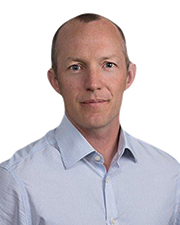
Connolly Brothers
The year of COVID has come with questions as to whether companies and organizations will begin abandoning their office buildings in the wake of real-time demonstrations of employees’ capacity to work from home. A May 2020 Financial Times headline blared, “The end of the office? Coronavirus may change work forever,” and a piece by Catherine Nixey in The Economist ran under the banner “Death of the Office.” Interestingly, neither of these articles were as bombastic as their headlines, and both contained volumes of support for a completely contradictory viewpoint. To paraphrase Mark Twain, rumors of the death of office workspace have been greatly exaggerated.
The idea that there will be a massive work-from-home realignment fails to recognize a simple but important point: almost no one wants to do it. A recent study by JLL company Big Red Rooster found that 94% of employees surveyed would like to work in an office at least some of the time. As a father of three children, I can attest to the occasional need to escape to the office, not from the office, to get things done. While some employees likely held romanticized work-from-home dreams, for many, and especially parents, the reality of the past year has not been quite so sanguine. Anyone who has tried to concentrate during a video meeting while a toddler has a meltdown in the next room understands this all too well.
Even those who have managed to carve out ways to avoid “WFH” distractions are not necessarily in love with the all-remote model. For most, the office environment represents not only a physical location to produce work, but a place to socialize with colleagues. Most businesses recognize that social relationships among employees are the glue that holds their organization together, and solely-remote interactions do not lend themselves to strong bonds or the growth of a shared company culture. With a fully remote workforce, maintaining that culture becomes exceedingly difficult with existing employees and near-impossible to share with new hires.
In addition, while some introverts and lone wolves have thrived during COVID, it has been a trial for those extroverts who are energized by interacting with others. In short, the office is not likely to go away because too many people do not want it to go away.
While we are unlikely to see a complete overhaul to the way we all do business, it may be equally foolhardy to assume that nothing will change–that everything will simply reset to pre-COVID conditions with zero lessons learned on the part of office-based businesses. Management is not likely to “un-see” which of their employees were even more productive in a remote setting, and in a world that has just battle-tested what can be done remotely, employers competing for top talent in high-demand fields are likely to consider adding some degree of location flexibility into their new job postings and descriptions. Just as many employees express an eagerness to work in an office at least some of the time, it is no secret that many also desire to work closer to home at least some of the time.
These dynamics may point organizations to give greater thought to the hub-and-spoke office model. In the hub-and-spoke system, a company retains one central location and supplements this hub with a field office, or a series of field offices. Already prevalent at many large corporations, this model is nothing new, but the lessons of COVID may encourage more to consider implementing it.
Connolly’s home base on the North Shore of Massachusetts is the perfect example. Our region is home to many talented employees involved in Boston’s knowledge-based economy. Many of them have spent years on specialized training and are deeply invested in their career, however few are enthusiastic about spending three hours a day getting to and from the city in rush-hour traffic or on crowded commuter trains with overtaxed Wi-Fi systems and oft-distracting hubbub. A hub-and-spoke office model may present an alluring alternative: the capacity to regularly gather employees in a city-based nerve center as needed alongside the game-changing employee benefit of a short commute to a smaller satellite office many days of the week. This may be all it takes to dissuade most key employees from playing the field for closer-to-home or fully-remote options.
While no one knows what the post-COVID future holds, history suggests that sweeping predictions of instantaneous social reorganization rarely materialize. As such, for commercial real estate, I suspect COVID will continue to bring about change but will not change everything – not revolution, but evolution.
Thad Minshall is vice president of real estate & development at Connolly Brothers, Beverly, Mass.
 (1).png)







